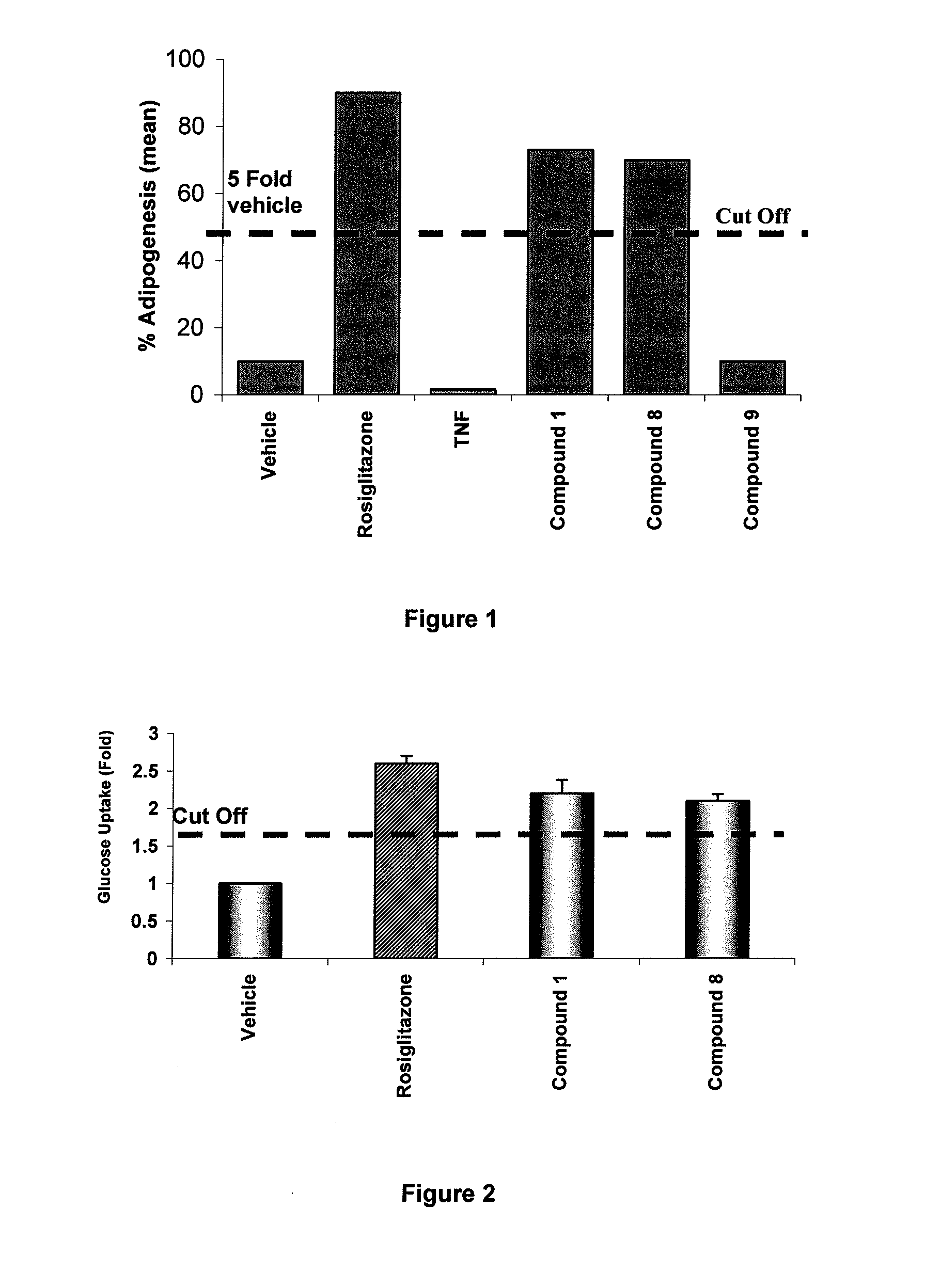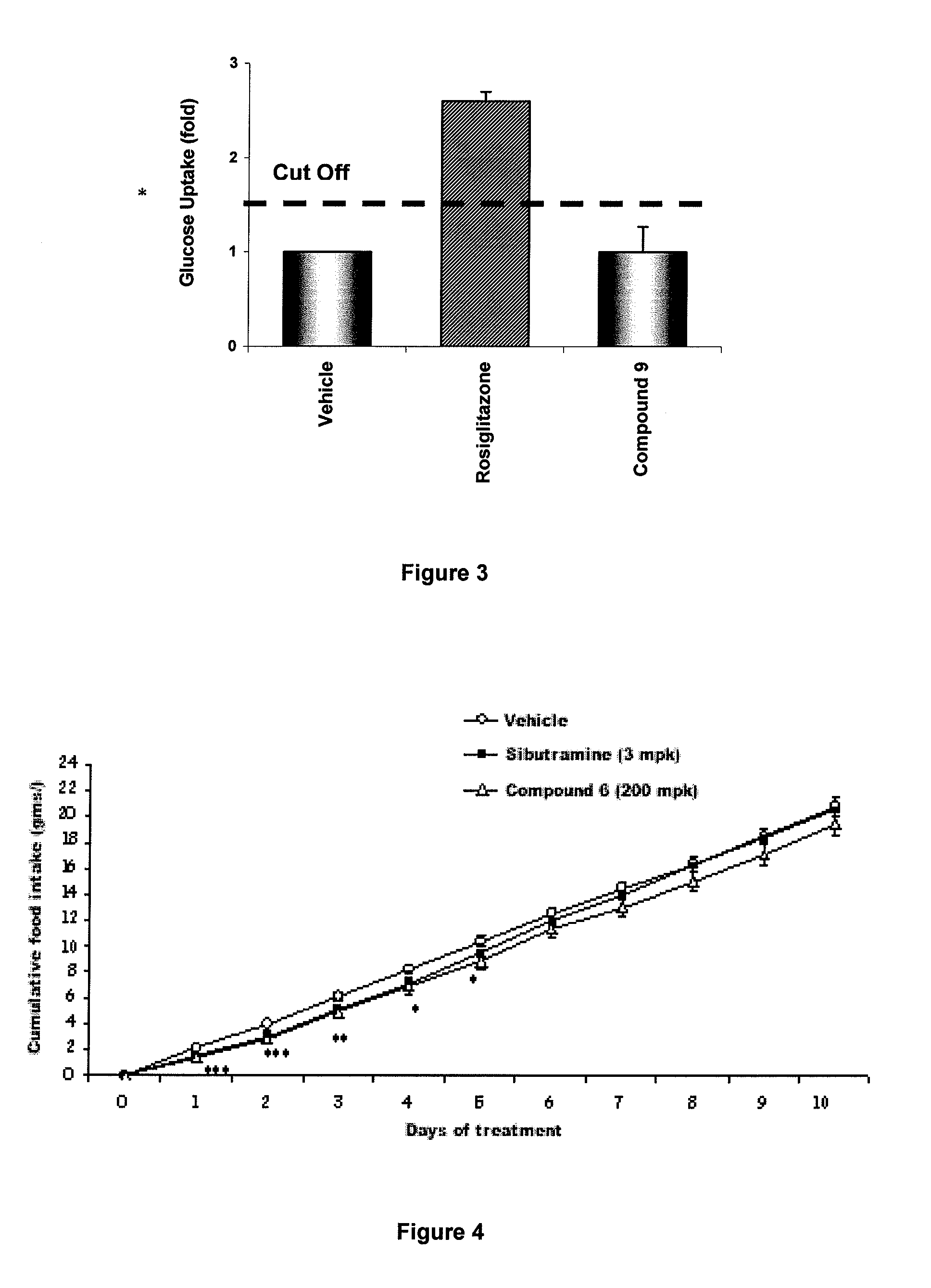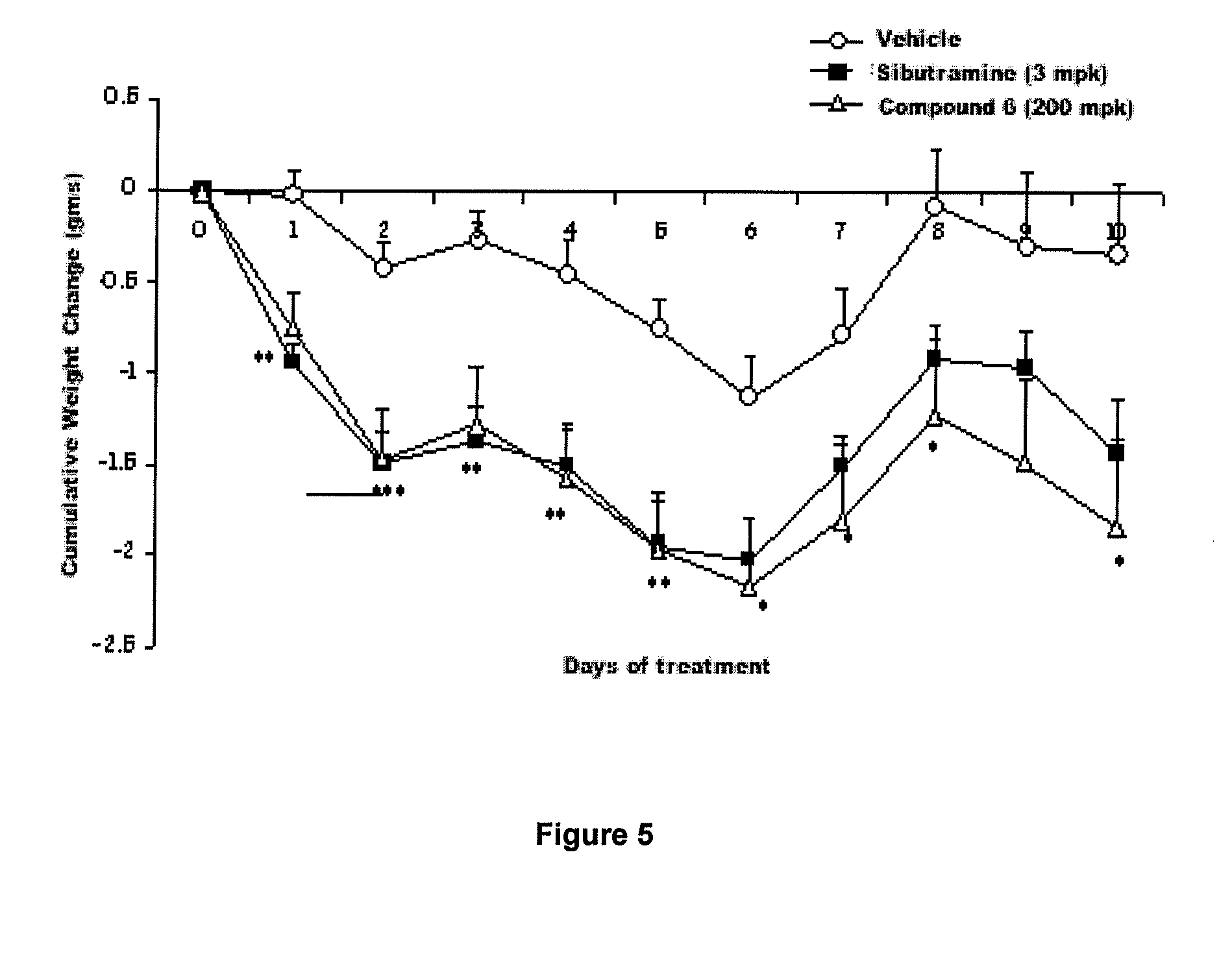Method for identifying compounds that act as insulin-sensitizers
a technology of compound and receptor, which is applied in the field of compound identification and receptor, can solve the problems of uncontrollable diabetes, renal failure, premature cardiovascular mortality, non-traumatic limb amputation and premature cardiovascular mortality,
- Summary
- Abstract
- Description
- Claims
- Application Information
AI Technical Summary
Benefits of technology
Problems solved by technology
Method used
Image
Examples
example 1
2-{4-[2-(tert-Butoxycarbonyl-methyl-amino)-ethoxy]-benzyl}-2-methoxy-malonic acid dimethyl ether (Compound 1)
[0075]The title compound was prepared in four steps starting from 4-hydroxy-benzaldehyde as follows.
Step 1
Preparation of 4-hydroxymethyl-phenol
[0076]4-Hydroxy-benzaldehyde (20 g, 0.16 mol) was dissolved in methanol (150 mL) and to it sodium borohydride (7.4 g, 0.19 mol) was added at 0° C. in portions (approximately 500 mg each time) over a period of 30 minutes with stirring. Stirring was continued for another 30 minutes. Solvent was evaporated and water was added to it. The reaction mixture was acidified using 10% acetic acid in water and was extracted using ethyl acetate. Ethyl acetate layer was washed with water and brine and was dried over sodium sulfate. Solvent was removed and crude product was crystallized using pet ether and ethyl acetate to obtain the title compound.
[0077]Yield: 18 g (88.5%).
Step 2
Preparation of acetic acid 4-hydroxy-benzyl ester
[0078]The compound of ...
example 2
3-{4-[2-(tert-Butoxycarbonyl-methyl-amino)-ethoxy]-phenyl}-2-methoxy-propionic acid (Compound 2)
[0084]Compound of example 1 (4.0 g, 0.0094 mol) was dissolved in ethanol (30 mL) and to it 1 N sodium hydroxide solution (23.5 mL) was added and mixture was stirred at 25° C. for 1 hour. The reaction mixture was concentrated and was diluted with water. Reaction mixture was acidified with dilute hydrochloric acid and was extracted with ethyl acetate. Ethyl acetate layer was washed with water and brine and was dried over sodium sulfate. Solvent was removed and semi-pure compound (3.3 g) obtained was dissolved in DMSO (10 mL). Mixture was heated at 60° C. with stirring for 12 hours. The reaction mixture was diluted with water and was extracted with ethyl acetate. Ethyl acetate layer was washed with water and brine and was dried over sodium sulfate. Solvent was removed and crude product obtained was purified by column chromatography (silica gel—˜200 mesh, 2% methanol in chloroform) to obtain ...
example 3
{4-[2-(1-Oxo-5-thiocarbamoyl-1,3-dihydro-isoindol-2-yl)-acetyl]-phenoxy}-aceticacid-2-methyl-2-(pyridine-3-sulfonylamino)-propyl ester (Compound 3)
[0086]The title compound was prepared in five steps starting from 2-amino-2-methyl-propane-1-ol and pyridine-3-sulfonyl chloride as follows.
Step 1
Preparation of pyridine-3-sulfonic acid (2-hydroxy-1,1-dimethyl-ethyl)-amide
[0087]2-Amino-2-methyl-propane-1-ol (7.66 g, 80 mmol) was dissolved in dichloromethane (160 mL) and pyridine (6.44 mL, 80 mmol) at 0° C. and to this solution, pyridine-3-sulfonyl chloride (10.66 g, 60 mmol) was added in 10 equal portions over a period of 30 minutes. The reaction mixture was stirred at 0° C. for 1 hour followed by stirring at 25° C. for 16 hours. The reaction mixture was diluted with dichloromethane (100 mL) and washed with water (3×20 mL) followed by brine (10 mL). Dichloromethane layer was dried over anhydrous sodium sulfate. Solvent was removed and the residue was purified by column chromatography (sil...
PUM
| Property | Measurement | Unit |
|---|---|---|
| Fraction | aaaaa | aaaaa |
| Mass | aaaaa | aaaaa |
| Mass | aaaaa | aaaaa |
Abstract
Description
Claims
Application Information
 Login to View More
Login to View More - R&D
- Intellectual Property
- Life Sciences
- Materials
- Tech Scout
- Unparalleled Data Quality
- Higher Quality Content
- 60% Fewer Hallucinations
Browse by: Latest US Patents, China's latest patents, Technical Efficacy Thesaurus, Application Domain, Technology Topic, Popular Technical Reports.
© 2025 PatSnap. All rights reserved.Legal|Privacy policy|Modern Slavery Act Transparency Statement|Sitemap|About US| Contact US: help@patsnap.com



